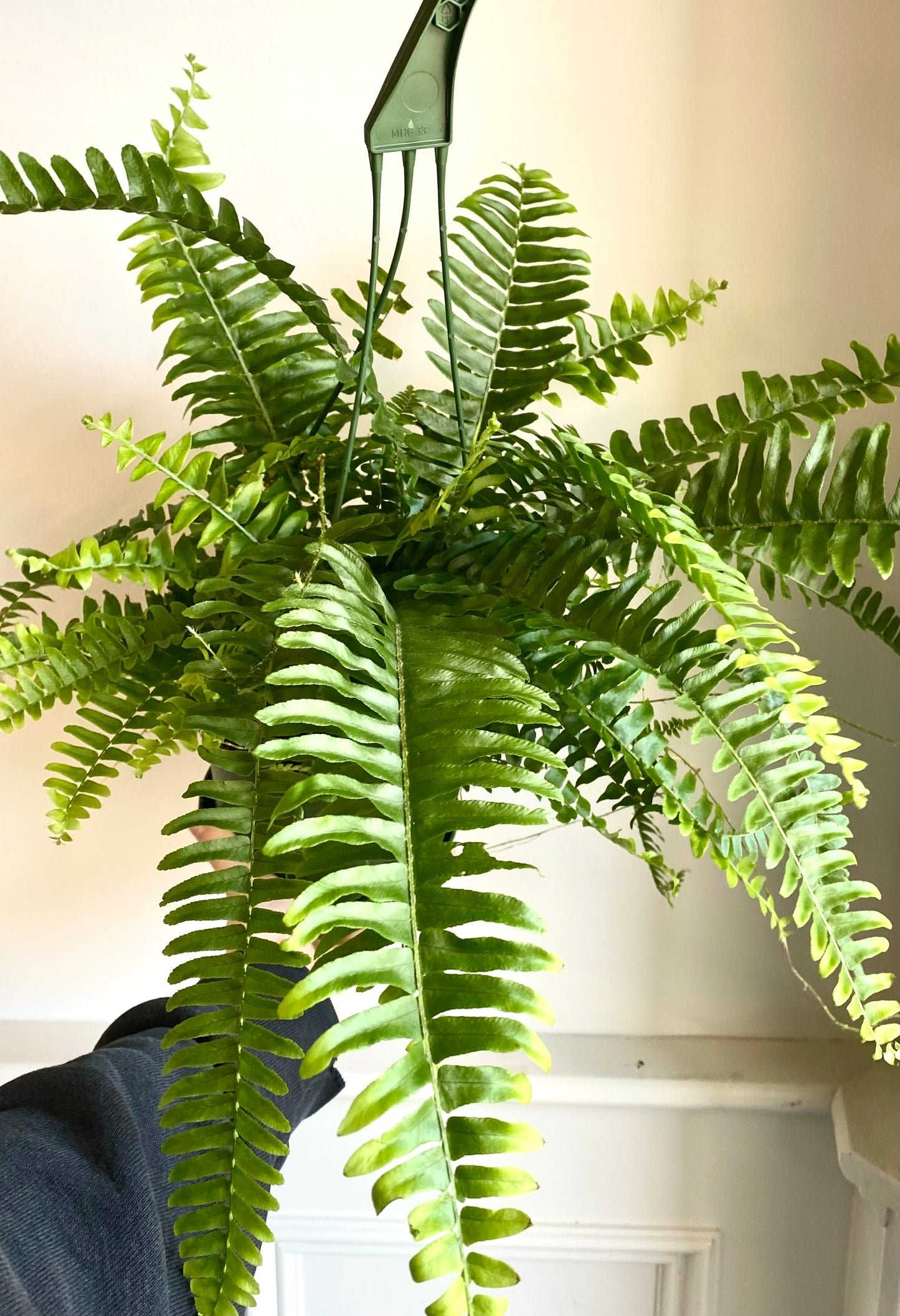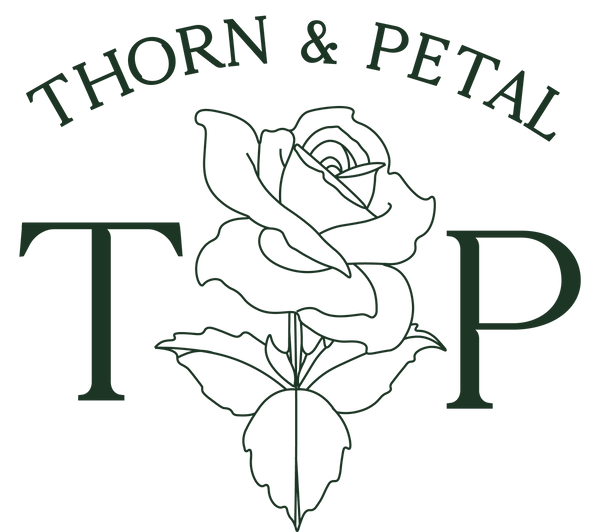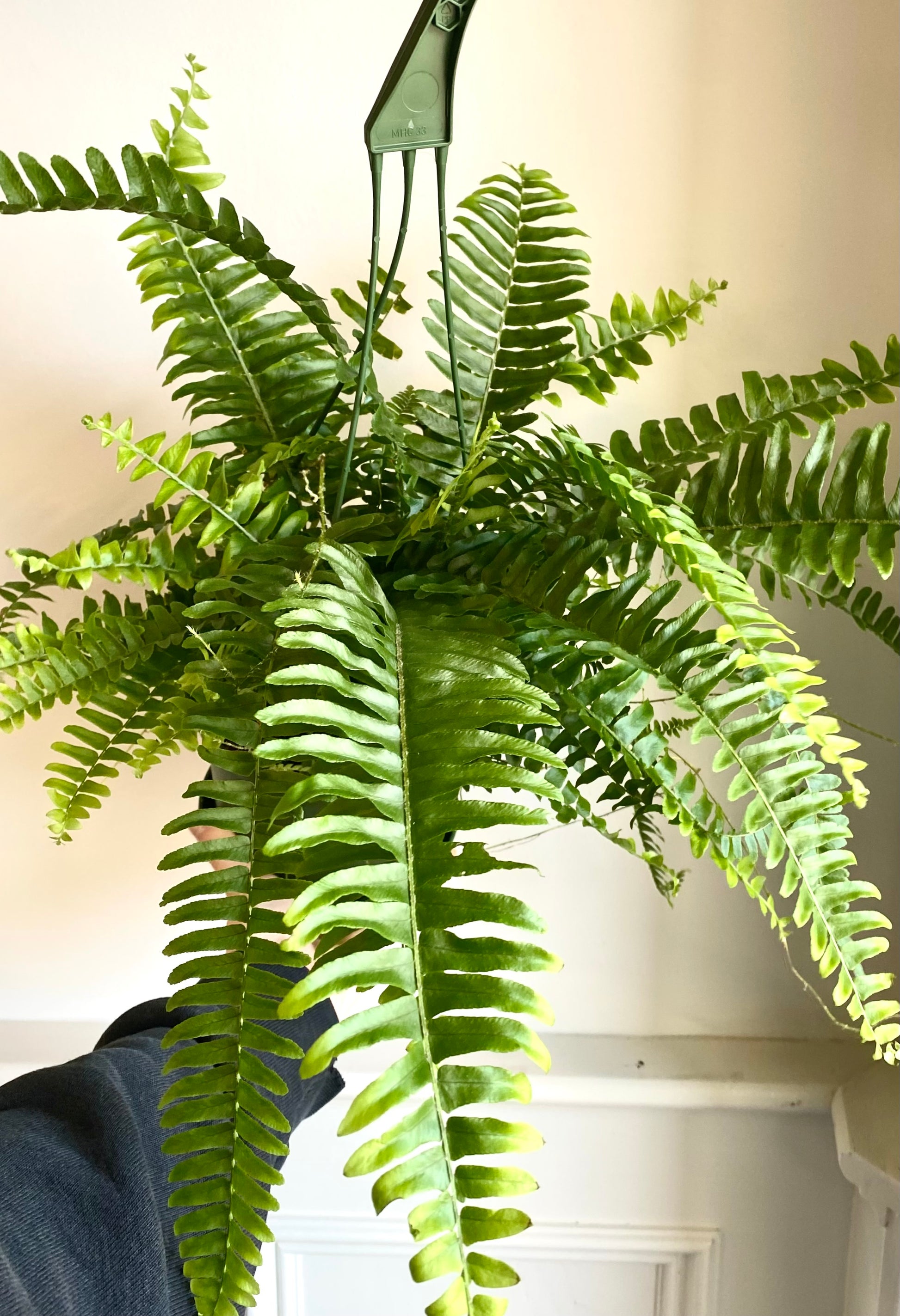Boston Fern Hanging Basket
Boston Fern Hanging Basket
Couldn't load pickup availability
The Boston fern, known scientifically as Nephrolepis exaltata 'Bostoniensis', is a popular fern species appreciated for its graceful fronds and lush foliage. Here's some information about the Boston fern:
-
Appearance: The Boston fern is characterized by its arching fronds, which are composed of numerous small leaflets called pinnae. The fronds can grow up to 3 feet (90 centimeters) in length, creating a cascading or spreading effect. The foliage is bright green and has a delicate, feathery texture. Boston ferns are typically grown for their ornamental foliage rather than flowers, as they are primarily foliage plants.
-
Native Habitat: The Boston fern is native to tropical regions of the Americas, including Florida, Mexico, and parts of South America. In its natural habitat, it can be found growing in moist, shaded areas such as forests, swamps, and riverbanks.
-
Cultivation: Boston ferns are commonly grown as indoor plants but can also be cultivated outdoors in mild climates. They prefer bright, indirect light but can tolerate lower light conditions, making them suitable for homes and offices with limited natural light. They thrive in temperatures ranging from 60°F to 75°F (15°C to 24°C) and prefer high humidity levels.
-
Watering: Keep the soil consistently moist but not waterlogged. Water Boston ferns when the top inch of soil feels dry to the touch, allowing excess water to drain away freely from the pot. Avoid overwatering, as this can lead to root rot and other issues. In winter, reduce watering frequency as the plant's growth slows down.
-
Humidity: Boston ferns prefer high humidity levels and benefit from regular misting or placement in a humid environment. If you are growing the plant indoors, you can increase humidity by placing a humidifier nearby, setting the pot on a tray filled with pebbles and water, or grouping it with other plants.
-
Soil: Plant Boston ferns in a well-draining potting mix rich in organic matter, such as a mixture of peat moss, perlite, and compost. Ensure that the pot has drainage holes to prevent waterlogging, which can lead to root rot.
-
Fertilization: Feed Boston ferns with a balanced liquid fertilizer diluted to half-strength every two to four weeks during the growing season (spring and summer). Reduce or eliminate fertilization in fall and winter when the plant's growth slows down.
-
Pruning and Maintenance: Trim or prune Boston ferns regularly to remove dead or yellowing fronds and maintain their shape. Remove any brown or damaged tips with clean, sharp scissors or pruning shears. Boston ferns are relatively low-maintenance plants and do not require extensive pruning.
Share


